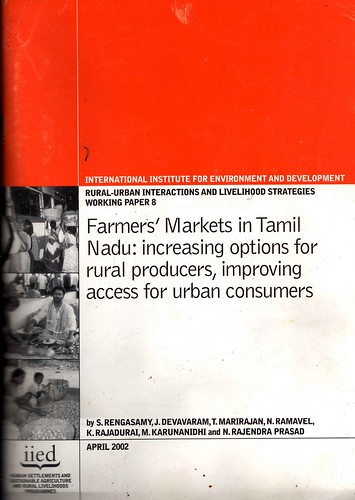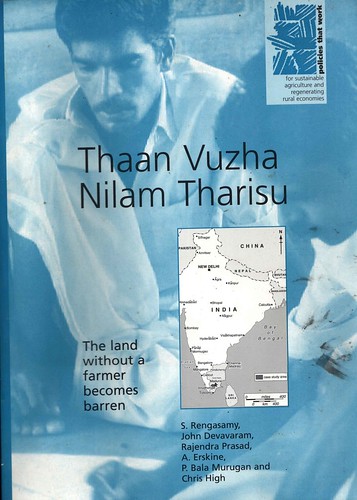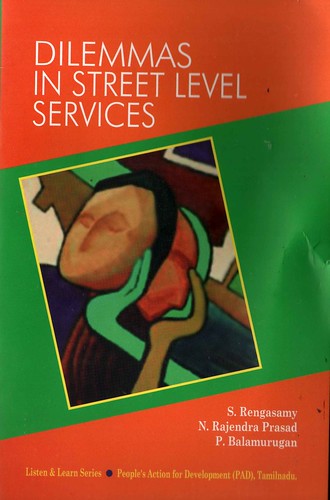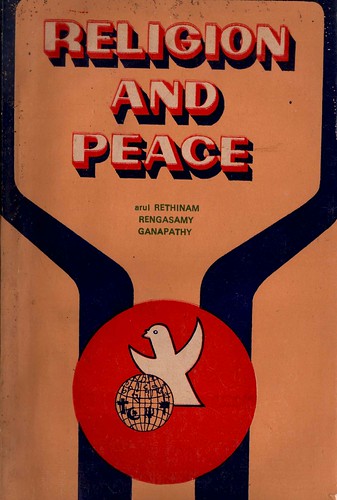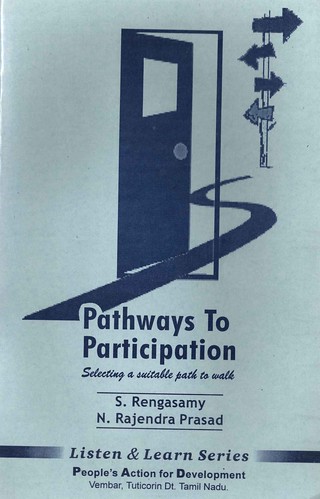First visit to Mekkarai
It was a pure destiny in the physical form of Mr. M.Ramachandran of Naethra Technology, Chennai that took me to Mekkarai,a beautiful village on Tamilnadu-Kerala border,which opened up new learning opportunities and to initiate development experiments from new perspectives.
A friend known to both of us, told me that a man from Madras, a devotee of Achankoil Iyyappan is interested in rural development in a village near Senkottai on the way to Achankoil and my guidance will be of great help to that man. My previous experience with some of the goodwill based development experiments made me to not to accept his request immediately. But that friend was persisting me and finally I accepted his request .. not because of the proposed initiative the Madras man is going to take up..but because of my interest to visit at least one Iyappa shrine.Finally a date was fixed and it is planned to start our journey from Madurai at 4 o’clock in the early morning.

When I met Mr. Ramachandran, he looked like a Swamiji with his kaavi dhoti. When I asked him what made him to take up this initiative, his answer was simple and straightforward. "எனக்கு கிடச்ச வாழ்க்கை, செல்வம்… அச்சன்கோவில் அய்யப்பனாலும், மேக்கரை கருப்பானாலும் கிடச்சதா நினைக்கிறேன். அதுல கொஞ்சம் பிறருடன் பங்கிட்டுக்கொள்ள நினைக்கிறேன். (I strongly believe that whatever I have is the blessings of Achankoil Ayyappan and Kottaivasal Karuppan and I have to share it with those who live in that area) If he would have said that he was moved by the poverty and backwardness of the village, I would not have been attracted either to him or to his initiative in Mekkarai. What I found in him was a quest for self actualization, which basically sustains initiatives like this. That attracted me towards Ramachandranji and Mekkarai.
I went to Mekkarai along with him and our common friend Swadeshi Srinivasan. For a man like me who hails from a rain fed area, Mekkarai looked beautiful with its scenic beauty. Mekkarai is a border village between TN and kerala, on the way to Achankoil is located in a forest area. We always presume that wherever beauty reigns it will automatically bring riches and prosperity. Is it not? Any one who passes through Mekkarai will definitely think that it should be a rich village. As I looked at Mekkarai, I thought that one need to adopt a different strategy to work in Mekkarai. ஆனால் அடுத்த ஐந்தாறு மணிநேரத்தில் மேக்கரையில் நெடிதுயர்ந்த மரங்களின் நிழலில் வறுமை பல்லாண்டுகளாக சுகமாக அமர்ந்திருப்பதை காண முடிந்தது. I realized within a short time poverty is deep rooted as the roots of the trees standing there.But condition there in Mekkarai was entirely different..the entire land being owned by a mutt…the houses are being dispersed over 2500 hectares..population consisted of Tamils, Malayalis…more than that seeds for Meenakshipuram episode was sown here. For my limited experience, it was an entirely different village.
I promised to be with Ramachandranji in his initiative, be with the villagers, to work with them. We returned from the village with a determination, a determination to share our destiny, knowledge, resources with Mekkarai people.
It was really a paradox, when we left the village in the evening, the village entered into us from the opposite side. It is an interesting story to share, how not only we, but also our friends also have been entrapped by Mekkarai.
Integrating PRA with GPS
My urge to further understand Mekkarai, to qualitatively improve the PRA tools especially mapping tools with GPS (Geo-Positioning System) and my students (2007 batch of Community Development) interest to get a hands on experience in PRA tools..all these resulted in organizing a PRA Camp in Mekkarai.
Since I planned to integrate GPS with social mapping and I could not find any previous model or review to fall upon, I asked help from Dr.T. Pavendar of MKU and PAD-Vembar and my good friend Mr. Rajeshkumar to work with the computer in the field.

While the students with the help of Mr. Ramalingam (PAD) and another student Mr. Jeganathan facilitated PRA exercises as I planned, Dr. Gladwin of PAD and Dr. Pavendar as per my plan took GPS points and tracked the routes with GPS. There was a problem in downloading the GPS points (now there are humpty number of
| What made me to use GPS in PRA In the past, when PRA was introduced, it was possible to bring quality PRA outputs when we directly facilitated PRA tools. Now I find it very difficult to get quality output. The reason I found that, a decade before, as facilitators we felt that to get quality output we have to spend time with the communities and local people were also found time to be with us. It normally took 4-5 hrs or even more to draw a self explanatory social map of a village with 200-250 households. It was possible to engage the participants with interest through our facilitating skills. The present generation of facilitators as well as communities are impatient to spend this much of time. The output brought by the facilitators many times is incomplete and also frustrating. Since the nature of participation has underwent a radical transformation, no one can be blamed for this. In order to overcome the problems of facilitating some basic PRA tools, I thought of using GPS. I used GPS, to locate the important landmarks in a community (depending on the size of the community 20-50 GPS points) and converting it in to a sketch and asking the locals to put the details in to the sketch as one does it in the conventional social mapping. This really saved time for both of us. I found that more informative and reliable social maps could be generated by using this methodology. Since using GIS software and getting training in it is beyond our reach, I used COREL Draw to digitalize the social map and other visuals. The maps thus produced are roughly scalable and the local communities liked it immensely. Now we are in a process of developing a database of households that can be viewed when the cursor moves on to a particular household. |
soft wares available to download it), finally we prepared a GIS map and the social map taken by the students integrated with it and Rajesh has developed a Mekkarai map in coral draw for presentation.
We were able to draw not an eye sketch of the social map as any PRA practitioners do, but a scalable social map with 540 households spread in more than 2500 hectares.
The idea of integrating GPS with PRA was literally thought of by me and I am happy at the output we got. The problems we experienced and the solutions we arrived was ours own. After returning from Mekkarai, I happened to visit PPGIS site, but it was not helpful in answering some of the problem we experienced in the field.
Mekkarai in fact opened up possibilities in further making PRA as a pleasant experience.
What we did in Mekkarai after this? See the slide show
See Mekkarai Village in Flickr
Learn more about using PGIS in a Urban Ward & in an island |
Part II
Integrating PRA with GIS is called as People’s Participatory Geo Information System(PPGIS).Experiments are plenty in using GIS to generate information for planners. There is nothing wrong in generating data for planners but the people do not own the process as it happens with the village maps.
If we want to claim PGIS as truly participatory, we should address the problems of the field level workers who are involved in facilitating participatory exercises. Creative integration of GPS / GIS in facilitation can improve the quality of PRA exercises, make the local people to understand the process better and reduce the time taken for facilitation. Though GPS belongs to high end technology, fishermen in Tamilnadu are extensively using GPS and I personally seen how it reduced their drudgery and improved their mobility in the sea. Grass root level workers with their fresh thinking and creativity definitely enrich and add value to those tools we give them. I happened to be with Robert Chambers when he was impressed by a physically challenged girl using a cigarette wrapper to enter the household data and Chambers finally adopted it as a card methodology to enter the household data and this methodology till date is used by thousands of facilitators in the field.
In integrating GPS/GIS with PRA, I was misguided, cheated, made to waste time and precious personal resources by those who claimed that they knew GIS. Finally, we learnt many things on our own. Any one in the PGIS will be surprised to know how we improved our capacity on our own, if they happened to see our earlier social maps and the present one I attempted at Mekkarai village in Tamilnadu using GPS. I am happy to say that now we are experimenting PGIS on a wider scale both in the rural as well as in urban settings.
What we need
From my personal experience what we need to practice PGIS is to find out a simple tool for digital map making (a diagramming tool), learn to use GPS (which is used by ordinary fishermen in Tamilnadu) and finding out an appropriate software that can use the map as an front end to retrieve the data base or else encourage the local people to insert comments as millions are doing it in wiki maps. Since many of the development workers even at the grass root level are using computers it is possible to scale up PGIS. Development workers at the grass root level will take care of the next phase of participatory GIS if we provide them with appropriate and affordable soft wares.



